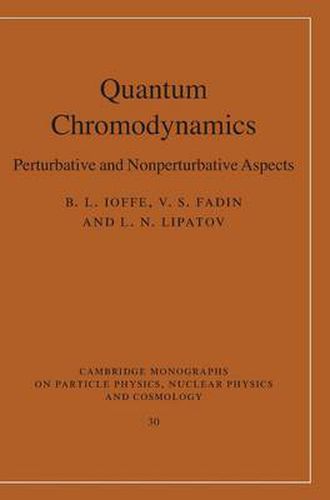Readings Newsletter
Become a Readings Member to make your shopping experience even easier.
Sign in or sign up for free!
You’re not far away from qualifying for FREE standard shipping within Australia
You’ve qualified for FREE standard shipping within Australia
The cart is loading…






Aimed at graduate students and researchers in theoretical physics, this book presents the modern theory of strong interaction: quantum chromodynamics (QCD). The book exposes various perturbative and nonperturbative approaches to the theory, including chiral effective theory, the problems of anomalies, vacuum tunnel transitions, and the problem of divergence of the perturbative series. The QCD sum rules approach is exposed in detail. A great variety of hadronic properties (masses of mesons and baryons, magnetic moments, form factors, quark distributions in hadrons, etc.) have been found using this method. The evolution of hadronic structure functions is presented in detail, together with polarization phenomena. The problem of jets in QCD is treated through theoretical description and experimental observation. The connection with Regge theory is emphasized. The book covers many aspects of theory which are not discussed in other books, such as CET, QCD sum rules, and BFKL.
$9.00 standard shipping within Australia
FREE standard shipping within Australia for orders over $100.00
Express & International shipping calculated at checkout
Aimed at graduate students and researchers in theoretical physics, this book presents the modern theory of strong interaction: quantum chromodynamics (QCD). The book exposes various perturbative and nonperturbative approaches to the theory, including chiral effective theory, the problems of anomalies, vacuum tunnel transitions, and the problem of divergence of the perturbative series. The QCD sum rules approach is exposed in detail. A great variety of hadronic properties (masses of mesons and baryons, magnetic moments, form factors, quark distributions in hadrons, etc.) have been found using this method. The evolution of hadronic structure functions is presented in detail, together with polarization phenomena. The problem of jets in QCD is treated through theoretical description and experimental observation. The connection with Regge theory is emphasized. The book covers many aspects of theory which are not discussed in other books, such as CET, QCD sum rules, and BFKL.